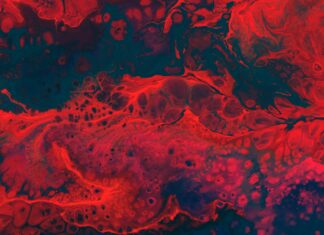FluidD, a groundbreaking firmware for 3D printers, emerges as a trailblazing force in the realm of additive manufacturing. As the world of 3D printing advances with remarkable speed, driven by innovation and a thirst for precision, the need for sophisticated and adaptable firmware becomes paramount. FluidD takes center stage as a solution that not only empowers 3D printers with advanced capabilities but also revolutionizes the way creators interact with their machines. Its name, “FluidD,” reflects its dynamic nature, signifying its ability to flow seamlessly with the intricate dance of 3D printing processes.
In the symphony of 3D printing, where intricate designs transform into tangible realities, FluidD orchestrates a harmonious collaboration between digital blueprints and mechanical movements. This firmware emerges as the conductor that translates the language of code into the physical language of movement, guiding printers to meticulously craft intricate objects layer by layer. Beyond its technical prowess, FluidD represents a gateway for creators, enthusiasts, and innovators to channel their imaginations into tangible forms, reshaping industries and redefining what’s possible.
FluidD’s significance stretches beyond its functional attributes—it encapsulates a paradigm shift in how 3D printing firmware operates. Traditionally, firmware was seen as a rigid, unchanging layer that merely facilitated communication between hardware and software. FluidD disrupts this notion by introducing a fluid and adaptable framework. It’s not just a static mediator—it’s a dynamic agent that can evolve, learn, and adapt over time, breathing new life into the 3D printing experience.
The journey of 3D printing, from raw material to intricate object, is marked by an intricate interplay of variables—temperature, speed, extrusion rates, and more. FluidD excels in this complex ballet, gracefully adjusting these variables in real-time to achieve unparalleled precision. It’s akin to an expert musician who adjusts their performance on the fly, ensuring that every note is in perfect harmony.
Moreover, FluidD empowers creators with an unprecedented level of control and customization. It’s as if artists are handed a paintbrush that can change its bristle thickness, paint viscosity, and even color mid-stroke. With FluidD, the parameters of a print job can be fine-tuned while the printer is in motion, allowing creators to experiment, iterate, and perfect their designs in real-time.
The fluidity of FluidD’s operation isn’t confined to the hardware—it extends to the interaction between creators and their machines. Traditionally, configuring firmware required navigating a labyrinth of settings and codes. FluidD breaks down these barriers by offering a user-friendly interface that simplifies the process. Creators can now interact with their printers using a language that resonates with design and creativity, rather than technical jargon.
In the realm of innovation, FluidD stands as a catalyst. It’s not a static entity; it’s a living and evolving entity that grows with the community. With an open-source philosophy at its core, FluidD invites collaboration from a diverse pool of developers, enthusiasts, and experts. This collective intelligence nurtures innovation, as contributors push the boundaries of what the firmware can achieve, creating a feedback loop that benefits all.
FluidD’s role extends beyond professionals and enthusiasts—it finds its place in education too. As 3D printing gains prominence in STEAM (Science, Technology, Engineering, Arts, and Mathematics) education, FluidD serves as an ideal conduit for experiential learning. Students can witness the impact of changing parameters in real-time, turning abstract theories into tangible lessons.
In an era where customization reigns supreme, FluidD is a game-changer. It’s a tool that aligns with the concept of mass customization—tailoring products to individual preferences and needs while maintaining efficiency. FluidD’s adaptability and real-time adjustments cater to this demand, ensuring that each creation is unique and precisely matches the creator’s vision.
As industries grapple with the challenges of sustainability, FluidD plays a role by optimizing material usage. The firmware’s precision and adaptability lead to fewer errors, minimizing waste and maximizing the efficiency of print jobs. In a world where environmental consciousness is paramount, this attribute of FluidD aligns with the ethos of responsible manufacturing.
In conclusion, FluidD transcends the conventional understanding of firmware. It’s not merely a technical layer—it’s an enabler of creativity, a conductor of precision, and a catalyst of innovation. Its fluid nature mirrors the ever-evolving landscape of 3D printing, adapting to the needs of creators and industries alike. As the world continues to embrace the transformative power of 3D printing, FluidD stands as a testament to the fact that even in the world of technology, there’s always room for fluidity, adaptability, and creativity to flourish.
Adaptive Framework:
FluidD introduces a dynamic and adaptable firmware framework that goes beyond traditional rigid firmware. It’s designed to evolve, learn, and adjust over time, enhancing the 3D printing experience.
Real-time Precision:
FluidD excels in achieving precision by dynamically adjusting printing variables in real-time. This ensures that each layer is meticulously crafted, resulting in high-quality and accurate 3D prints.
User-friendly Interface:
FluidD offers a user-friendly interface that simplifies the interaction between creators and their 3D printers. It empowers users to control and customize print jobs without delving into technical complexities.
Open-Source Collaboration:
With an open-source philosophy, FluidD fosters a collaborative community of developers, enthusiasts, and experts. This collaborative ecosystem drives innovation, leading to continuous enhancements and improvements.
Enhanced Customization:
FluidD enables unprecedented levels of customization during the printing process. Creators can fine-tune parameters in real-time, allowing for experimentation and iteration to achieve desired outcomes.
These key features of FluidD showcase its innovative approach to firmware, its emphasis on real-time precision, user-friendly interaction, open-source collaboration, and enhanced customization for 3D printing enthusiasts and professionals.
In the symphony of technological evolution, where innovation orchestrates a harmonious blend of artistry and engineering, the emergence of FluidD casts a spotlight on the dynamic landscape of 3D printing. Like a maestro leading an ensemble, FluidD conducts a transformative movement, breathing life into the world of additive manufacturing. It’s a movement that echoes the fusion of creativity and precision, where lines of code coalesce into tangible artifacts, and where the abstract is meticulously crafted into the concrete.
FluidD’s journey resonates with the rhythm of adaptation—a trait that defines the most formidable innovations. As technology’s tempo accelerates, embracing new instruments and harmonies becomes essential. FluidD embraces this rhythm with open arms, offering a firmware framework that evolves alongside the rapidly evolving 3D printing landscape. It’s a dance of evolution, where the firmware not only keeps pace but also takes the lead, innovating and refining to accommodate the ever-expanding universe of 3D printing possibilities.
The world of 3D printing is a convergence of mathematical precision and artistic ingenuity. It’s a canvas where mathematical equations are translated into sculptural forms, layer by layer. FluidD takes on the role of a translator, converting the digital language of design into the physical language of creation. Each layer represents a note, a stroke, a brush of material that transforms a digital blueprint into a tangible reality. In this translation, FluidD doesn’t merely reproduce; it interprets, imbuing each creation with a unique resonance.
Beyond the mechanics, FluidD embodies a philosophy—a philosophy of fluidity in every sense. It’s a departure from the rigid structures that defined firmware in the past. FluidD’s adaptable nature mirrors the fluidity of creative thought, where inspiration flows without boundaries. It’s a tribute to the organic flow of ideas and a tribute to the essence of 3D printing itself—a technology that breathes life into designs that once existed solely in the realm of imagination.
FluidD’s presence sparks a new dimension of creativity. It’s akin to an artist’s palette, offering an array of possibilities that extend beyond the ordinary. Creators wield this palette to paint with precision, adjusting settings on the fly to manifest their visions. Just as a painter experiments with brush strokes and colors, FluidD invites creators to experiment with extrusion rates, layer heights, and printing speeds. It’s a canvas for innovation, where trial and error yield not errors but insights, not mistakes but revelations.
The relationship between a creator and their 3D printer has often been confined to the technical—a dialogue of instructions and responses. FluidD steps in as a mediator, enhancing this dialogue with a touch of humanity. The user-friendly interface acts as a bridge between creator and machine, allowing creators to converse with their printers in the language of design rather than the language of code. It’s a conversation where the printer not only listens but also adapts, where the technology becomes a collaborator rather than a tool.
FluidD’s journey echoes the ethos of open-source innovation. The concept of openness is more than a buzzword; it’s a movement that fuels progress through collaboration. FluidD’s open-source nature invites a community of thinkers and tinkerers, engineers and artists, to collectively shape its evolution. The result is a tapestry of ideas, woven with threads of expertise and imagination, creating a narrative that’s richer, more diverse, and more inclusive than what any individual could weave alone.
In the educational landscape, FluidD finds its place as a catalyst for experiential learning. The 3D printer becomes more than a machine—it’s an instrument of discovery. Students engage in a tactile journey of exploration, witnessing firsthand the impact of their decisions on the physical outcome. It’s learning through iteration, discovery through experimentation, and insight through action. FluidD’s adaptability enriches this experience, offering a fluid canvas for educators to bring theoretical concepts to life.
FluidD’s role in the grand narrative of customization is pivotal. In a world where personalization is paramount, FluidD is a conduit for the democratization of design. No longer are objects confined to a uniform mold; they become templates for individual expression. FluidD’s dynamic adjustments cater to the nuances of customization, empowering creators to imprint their personalities onto the objects they create.
The concept of sustainability finds an ally in FluidD’s precision. As industries embrace responsible manufacturing practices, every filament of material counts. FluidD’s ability to optimize settings in real-time translates into fewer errors, less waste, and more efficient prints. In an era where environmental stewardship is paramount, FluidD’s resource-conscious approach aligns seamlessly with sustainability goals.
In conclusion, FluidD is more than firmware—it’s an embodiment of the fluidity that defines creativity, innovation, and technological evolution. It’s a conductor that orchestrates the symphony of 3D printing, adapting, innovating, and collaborating. Just as water shapes landscapes over time, FluidD shapes the landscape of 3D printing, molding it into a realm where imagination flows freely and innovation finds its rhythm.


















